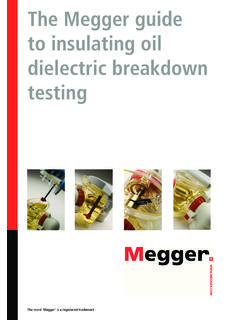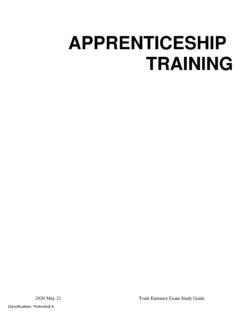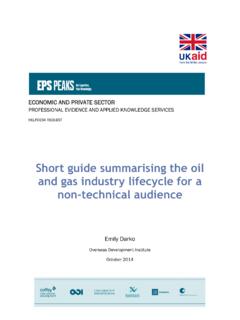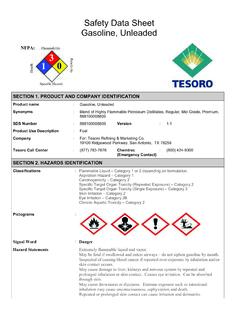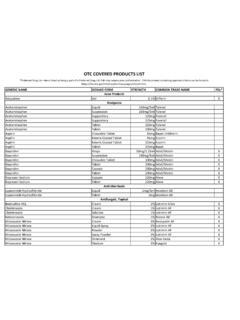Transcription of Instruction Manual - International Sewing Machine ...
1 -1- Instruction Manual For generic HA-1 15 class Sewing Machines -2- Your HA-1 Sewing Machine This is a generic Instruction Manual for straight stitch Sewing machines that are commonly known as HA-1s. The HA-1 Machine is mechanically a clone of the very old Singer 15 class, such as the 15-30 or 15-87. Many later 15 class Singers, such as the 15-91, used a differ-ent shuttle/bobbin case arrangement which was mostly reversed from this style. However, this early style be-came so prevalent that Singer eventually switched back to the earlier arrangement. HA-1 machines have been sold with hundreds of dif-ferent nameplates, but are all essentially the same. Most of the HA-1 machines have been built in the far eastern countries since the end of WW2.
2 There have been numerous modifications, but the basic Machine has remained so similar that this Instruction book will cover the important points for many machines. The bobbins are the common 15 class, and the needles are known as 15X1 (US), 705 (H or B, European), or HAX1 (Japanese or other far eastern), followed by the # that designates the size. A US size 16 = a European size 100, size 14 = size 90, size 12 = size 80. The Euro-pean # tells the actual size of the needle, such as the 100 is 1mm in dia., the 80 is .8mm in dia., etc. Prepared by: Bill Holman Madison, WI -3- TO REPLACE THE NEEDLE To replace the needle, raise the needle bar to its highest point by turning the hand wheel (Fig.)
3 3) TOWARD YOU by hand. Loosen the needle clamp screw (A) on the right hand side, and the needle clamp will open, allowing the old needle to slip out. Remove the old needle and slide the new needle up, (FLAT SIDE TO THE RIGHT) as far as it will go. When the needle hits the stop, it is positioned correctly. Tighten the needle clamp screw securely. For best re-sults change needle frequently. Note: Use only 15X1, 705, or HAX1 class needles. NEEDLES AND THREAD Never use a bent needle, nor one with a blunt point, since this causes imperfect stitches and may cause the needle to break. Unless the needle is in all the way, flat side to the right, the ma-chine will not function correctly, and you will not get good results.
4 The size of the needle should conform to the size of the thread, and both should be suitable for the material being sewn. In most applications, use the same thread top and bottom, and always use good quality thread and needles. -4- THE BOBBIN CASE Important In the follow-ing opera-tions, the nee-dle must al-ways be above the sur-face of the Machine . In raising the needle, al-ways turn the hand wheel toward you. REMOVING THE BOBBIN CASE INSERTING THE BOBBIN CASE Slide or lift the access plate. (Fig. 4) With left thumb and forefin-ger, open the hinged latch (A-Fig. 2) on the bobbin case, and hold securely as you withdraw it from the post. (D-Fig. 2) *Note the position of your fingers on the latch, because it is important to grip it the same way when reinserting it into the Machine .
5 After installing the bobbin in the case, grip the latch with your fin-gers in the same position* as when you removed it. (Note: If you grip it with your fingers pointed directly toward the case, it will be difficult to install it in the Machine .) Guide the bobbin case back onto the post with the finger (B-Fig. 2) into the notch (C-Fig. 2). This should be an easy operation requiring no force. When you release the latch, it will snap onto the groove on the post, and the three or four inches of thread hanging free from the bobbin case will be brought up through the needle plate as shown on page 8. -5- WINDING THE BOBBIN Note: This Machine uses standard 15 class bobbins. The bobbin can also be wound while the Machine is in operation by not releasing the stop motion knob as described be-low, in which case, Machine and bobbin winder will operate at the same time.
6 While holding the hand wheel with the left hand, turn the stop mo-tion knob toward you. This will permit the hand wheel to turn freely while the needle bar remains still. Place a spool of thread on spool pin (A). Pass the thread through the tension disk (B) at right corner of the base of the Machine . Attach the thread to an empty bobbin by winding it around numerous times or inserting it inside out through one of the holes. Place the bobbin on spindle (C). Push the bobbin winder (D) down until the snaps against the hand wheel, and finger (E) drops between the sides of the bobbin. Oper-ate the motor until the bobbin is full or the finger (E) snaps up and disengages the bobbin winder. Do not over fill the bobbin. Cut the thread, and tighten the stop motion screw while holding the hand wheel.
7 Your bobbin is now ready to be inserted in the bobbin case (pg. 6) and installed in the Machine (pg. 4). -6- TO THREAD THE BOBBIN CASE Hold the bobbin case between the left thumb and forefinger with the slot up. With 4 or 5 inches of thread trailing in the direction ..insert the bobbin into the bob-bin case and pull the trailing thread back into the slot, down and to the left, until it snaps into the delivery eye under the ten-sion spring. When you pull on the thread, looking at the bobbin in the open side of the bobbin case, the bobbin should rotate clockwise. There should be a slight but consistent tension (drag) on the thread as it is pulled through the delivery eye.
8 The tension can be increased by turning the ten-sion screw clockwise decreased by turning it counter-clockwise. -7- UPPER THREADING 1 Place a spool of thread on spool pin (A). 2 Bring the thread from the back of the spool, (so that the notch in the spool is up) and lead it through thread guide (B). 3- Run the thread down, between, and under the tension disks (C) from back to front. 4 Bring the thread over the guide bar (D) and through the check spring (E). 5- With the take up lever (F) in its uppermost position, bring the thread through it from back to front. 6 Run the thread through guides (G) & (H). 7 Thread the needle from left to right, drawing it through about 4-5 inches. -8- TO PREPARE FOR Sewing Thread Machine as per pages 6 & 7. Pick up the bobbin thread by holding the loose end of the needle thread with your left hand while turning the hand wheel toward you until the needle moves down and up and the thread take up lever has reached its highest position.
9 Pull gently on the needle thread where it is looped down through the needle plate, and the bobbin thread will come up through the needle hole. (If the bobbin thread does not come up, recheck your threading, and be sure that there is 4-5 inches of thread trailing from the bobbin case.) Finally, place both thread ends toward the rear of the Machine , with the needle thread going between the two presser foot toes (A). -9- TO START Sewing TO REMOVE THE WORK With the needle raised and the threads drawn back at least 4 inches through the toes of the presser foot, place the material to be sewn beneath the presser foot and lower the presser foot lift lever. Turn the hand wheel toward you until the nee-dle enters the material.
10 Regulate the desired stitch length (Fig. 12) and start Sewing . Do not try to help the feeding of the material by pulling by hand, as this may bend or break the needle. Gently guide the material as it feeds in the direction you want to sew. Stop the Machine by releasing the pressure on the foot or knee control and stopping the hand wheel with your right hand. If you are stopping to turn a corner, stop with the nee-dle just entering the material. If you are going to remove the material, stop with the needle and take up lever at their high-est positions. Then, raise the presser foot lift lever, draw the material to the back about 6-8 inches, and cut the thread. -10- Fabric Selector: The height of the feed dog may be regulated according to the thickness or other characteristics of the ma-terial being sewn, by proper setting of the drop feed knob.





